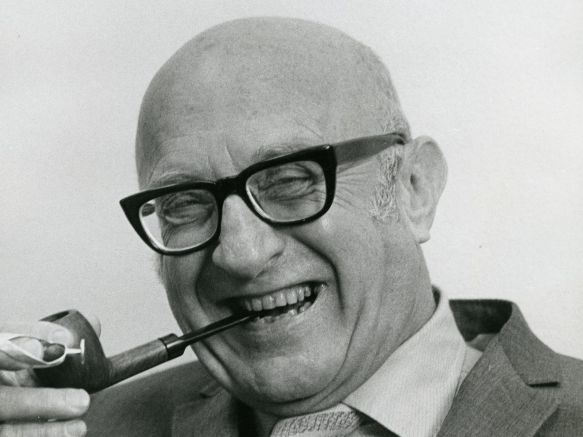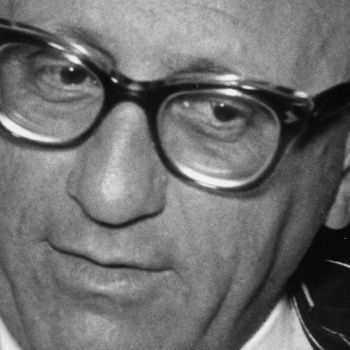
Curt Siodmak
Other names: Siodmak, Kurt (birth name); Baron, Curt; Siodmak, Curtis
Screenwriter, Director, writer
* in Dresden
† in Three Rivers (Kalifornien)
Siodmak, who came from a Jewish family, published his first stories while still a student in the illustrated ‘Das Magazin’, which his brother Robert had co-founded in 1924. After early film successes in Germany, including ‘Menschen am Sonntag’(1930), he fled to Switzerland following the National Socialist takeover in 1933. Siodmak then went to the United Kingdom and moved permanently to the USA in 1937, where he established himself as a specialist in the genres of horror and fantasy.
About the Estate
Written documents in this extensive estate comprise numerous research materials on applied physics. They should be understood as preparatory materials for science fiction works and refer to Siodmak’s most well-known literary work, ‘Donovan’s Brain’. It was published in 1942, and Felix E. Feist turned the story into a film adaptation under the same title a good ten years later. A material collection related to this film production indicates that the author was originally slated to direct the film.
Other written and printed documents contain materials on Siodmak’s literary subjects, stage plays, and some radio plays. However, some of these records are rare, for instance, on the follow-up novel ‘F.P. 1 antwortet nicht’, published in 1930, which Karl Hartl directed for Ufa in 1932. Preserved letters attest to Siodmak’s ties to Georg Kreisler, Charlton Heston (whom he tried to talk out of his glorifications of war), Albert Broccoli and Hans-Christoph Blumenberg (who published Robert Siodmak’s memoirs in 1980).
Excerpts from his private library, comprised of works about film history, pulp magazines and several first editions, often have personal references – either Siodmak had contributed to them as author, or they included texts written about him. A few works contain personal notes or dedications.
The central focus of the estate ‒ which began entering the Kinemathek in 1989 from Siodmak himself in several partial deliveries as purchases, gifts and long-term loans ‒ is made up of many hundred scripts, outlines, exposés, film narratives and synopses on both realized and unrealized films. (Text: Tarek Strauch)
Content
Script, Photography, Small object, Literature, Paper documents, Sound recording
Dimension
approx. 4.9 Shelf meter
Inv. No.
198912
Credit LineCurt-Siodmak-Archiv, Deutsche Kinemathek
